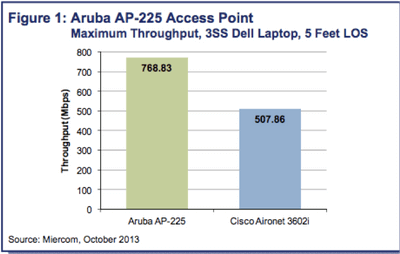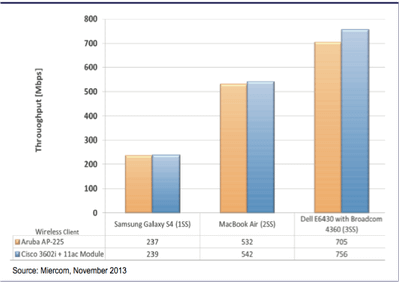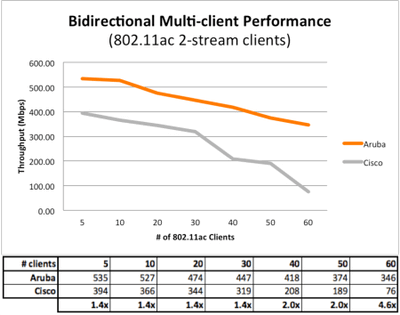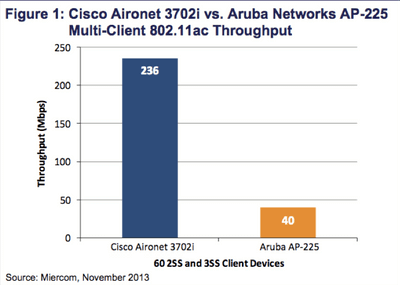Alan Kay once said, “People who are really serious about software should make their own hardware.” Steve Jobs quoted Alan when he first introduced the iPhone and in recent discussions with Aruba’s engineering team, this same philosophy applied to the development of the 802.11ac AP-225.
To achieve the design objective of making the AP-225 the highest performing 802.11ac AP, the hardware and software development efforts were united. This allowed for new and innovative capabilities like having multiple uplink interfaces on the AP with software that aggregates the links and the ability to use dual-core processors with software for symmetric multiprocessing. It’s these types of innovations that make the AP-225 the king of the road.
Unlike Aruba, Cisco took a different path to 802.11ac. Kudos to them for recognizing the need for 802.11ac APs as clients are overwhelming today’s Wi-Fi networks. It’s probably why they announced two 802.11ac APs within a couple of months of each other.
When you look under the hood of the AP-3700, it’s using the exact same Freescale 1023 Single-Core 800MHz processer as its predecessor, the 802.11n AP-3600. It’s like painting racing stripes on a Yugo and calling it track ready. CPUs are the AP’s engine and faster CPUs mean more clients per AP.
In an attempt to show the Cisco AP-3700 outperforms the Aruba AP-225, which repeatedly outperformed the AP-3600, Cisco paid Miercom to cook-up some tests with improbable scenarios.
Upon initial review of the Miercom report, we noticed they used custom engineering builds from Cisco, which are not publicly available. For Aruba, they didn’t even bother to download the latest publicly available software, which was accessible to them. I guess they had to put some bananas in the tailpipe for a fair test.
Lets explore Miercom’s TCP throughput tests. The new report shows TCP throughput for the AP-225 at 705Mbps for a Dell 3SS laptop. Interestingly enough, Miercom’s previous report showed Aruba’s TCP throughput at 768.83Mbps for the Dell 3SS laptop. I’m puzzled as well as to how Miercom came up with two different results for the same test. Download Miercom’s test report.
Miercom Test Report: October 2013

Miercom Test Report: November 2013

Next up. Multi-client testing. Miercom must have put the AP-225 in Valet Mode as it only got 40Mbps for their 60-client test. Our own internal test results show 346Mbps in bi-directional throughput tests. But, don’t take our word for it. The University of Delaware reported in a Network World article that their AP-225s sustain 400Mbps on a single AP with over 120 clients.
Aruba Test Report: November 2013

Miercom Test Report: November 2013

So, when you’re about to kick the 802.11ac tires, don’t be fooled by the racing stripes. Take a good look under the hood and make sure it has the processing power you need for today’s high-density environments. Learn more about Aruba 802.11ac with ClientMatch.
